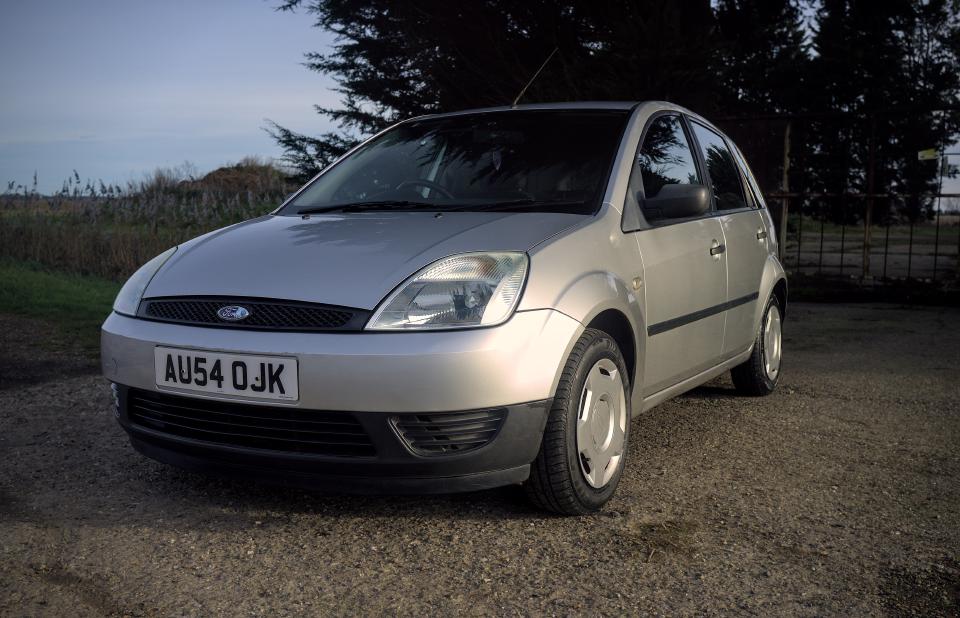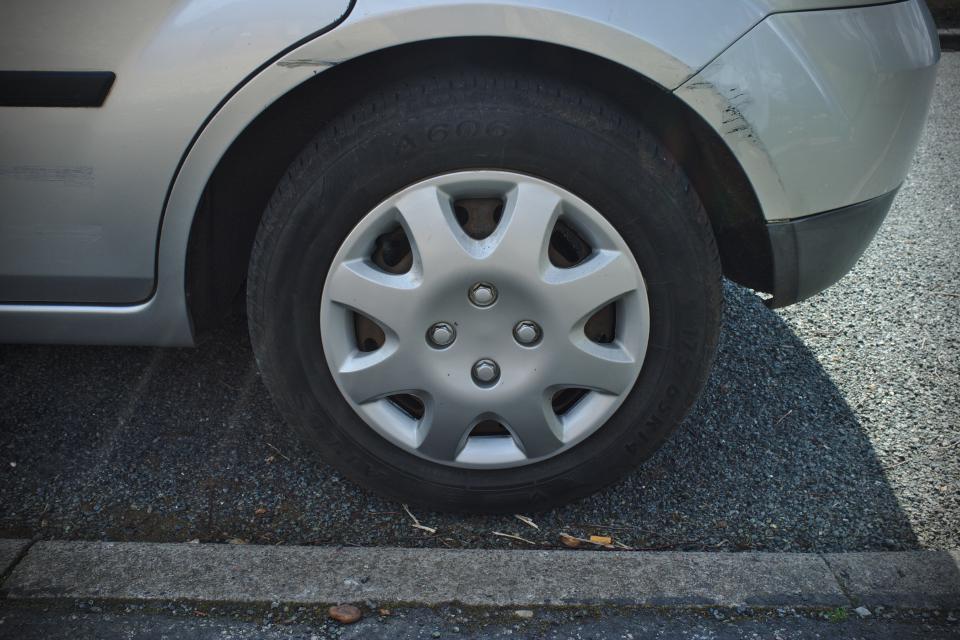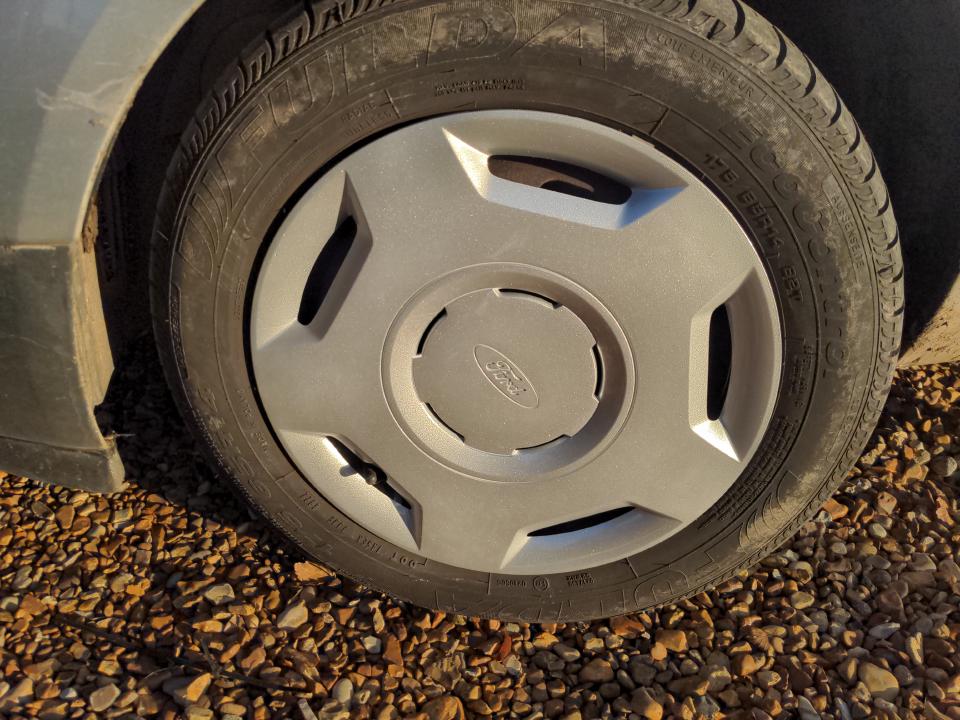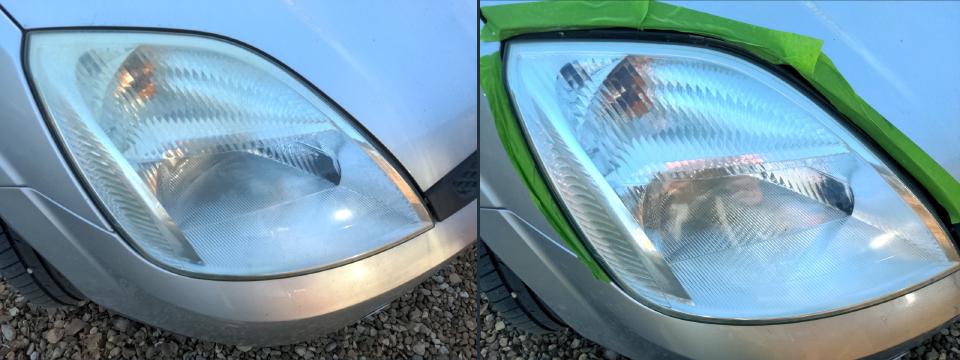Everything that happened to the cheap Fiesta
Nearly four years ago, I bought a fifth-generation Ford Fiesta for £600. Since then, I mentioned that it passed an MOT, and then I didn't say much about it after that. Inexplicably, it is still alive and I still own it; it recently went through its fourth MOT with me.
I used to call it "the shed" or "the shit car", because it's basically the minimum viable car that I could own. I've stopped calling it that, because it has been a champion. Here is everything that has happened to it.
Sink your money in it, and there you are / The owner of a two-thousand-dollar thousand-dollar car - The Bottle Rockets, "Thousand Dollar Car"
I had rather intended to use this until its first significant MOT failure, and then scrap it. It's a valid, very cheap way to own a car; one £600 car a year is £50 a month, which is probably less than I spend on biscuits. And then it failed an MOT, and I was like...what if I don't do that?
I'll admit, I got attached to it. It seemed a mighty shame to write off a perfectly functional car after nearly two decades of service. Fiestas, and pretty much any car that normal people can afford, go through a period of their life where they are worthless, people decide they are not worth fixing, and they get scrapped. I decided it is worth fixing.
The first MOT failure was for a leaking exhaust and an anti-roll bar ball joint. That barely cost anything to fix, so I did.
I say "I did", but I didn't. I long ago resolved to not do any work of consequence on this car. I already have projects, and all of my free time is accounted for. And with my tendency to get a bit carried away, it'd probably emerge four years later with a mad turbo forged Zetec engine or something. Instead, my favourite local garage does all the work for me. I like them a lot, and with all the money that has gone from my bank to theirs over the years I'm sure that they don't mind me either.
The second MOT failure was for a leaking rear shock absorber; that corner had been clunking for a few weeks before that, so I was not surprised. But it also had an advisory for a corroded rear spring for a while. It seemed mad to replace just one shock absorber, and then put a crusty spring back on it. And from repeating "it seemed mad to replace just..." a few more times it ended up with new shocks and springs at all four corners. That cost more than the car is worth, but that also made it ride like a new car.
I had already sunk more than the value of the car into the car before this, though. At just shy of 100,000 miles I replaced the cam belt and water pump. I didn't know when this was last done, because I didn't have any documentation of it, and even if I did have documentation I wouldn't know when it was last done, if you know what I mean. That was also more than the £600 I spent on the car, but it's also much less than the cost of rebuilding the engine, which is what would be necessary if the cam belt snapped.
It originally had some random no-name ditchfinder tyres on the front. These were fun, because they allowed this 80 horsepower car to do extended wheelspins through 3rd gear in the wet. They were also, for exactly the same reasons, not especially safe. I replaced them with some Fulda tyres on the front, which are much better and not very expensive. When one of the rear tyres developed a not-very-slow puncture (losing like 5psi per day), I replaced both rear tyres with ones that were not bad, which made no real difference.
To my surprise I haven't modified it, because that would be a terrible idea. I mean, I had considered getting much cooler wheels and replacing the suspension with something much sportier than standard when suspension-replacement time came around. But then I would have a slow car with cool wheels and overkill suspension which would cost more to insure and be worth slightly less if I ever sold it.
Instead, it is ever so slightly more original than it was when I bought it. Specifically, I replaced whatever the fuck these wheel trims were...
...with some genuine Ford ones that I got off eBay for like seventy quid.
This makes it look much less neglected, or would if I cared to clean the car more than once a year. This also makes it the only fifth-generation Fiesta to have all four of the correct wheel trims. Ever notice that? All of them either have at least one missing or they're on Halfords specials.
Not original, but another easy way to make a big improvement, were the floor mats. Being fitted with generic floor mats which don't fit any car in particular is an indignity that no car, however humble, should have to suffer. Instead, I found some rubber ones on eBay that fit the car perfectly, and only cost £20. Like the wheel trims, plain mats which actually fit the car are a very cheap way of making things look a little bit happier and fresher.
Another easy way to make it less tired is to polish the headlights. The headlights are the eyes of a car; getting rid of the haze that builds on plastic headlights over times brightens up a car's face. I used the Meguiar's kit which is 20 quid; you can probably get the same results with toothpaste and patience.
Talking of wheels (three subjects ago, this is how I talk in real life), one of the front one had an MOT advisory for having a slight buckle. It didn't seem to have any effect on driving it, but I did not want such a trivial advisory repeating itself in the MOT history. I replaced that with a genuine new one, which was £66 shipped.
The Fiesta's steering was a little vague since I bought it; there was a dead spot for the first couple of degrees of rotation of the steering wheel. It was entirely drivable; it just didn't feel as precise as I thought it should. Before the most recent MOT I asked my garage to investigate that. It was caused by a worn steering rack. That got replaced with a new one, and more than the value of my car left my bank account again. It made it a bit less vague.
At the same time I had a wheel bearing replaced. It was making a rumbling noise. I could have ignored it for longer than I did. I probably ignored it for longer than I should.
The plastic latch for one of the rear seat broke. This is a common problem, because it is badly designed. That's another one of those "subtle neglect" things I had to fix. I could have "fixed" it with a piece of string, or continued to use a screwdriver to yank it up. But it was a cheap fix to make the car right.
Also, the washer bottle cap was, for some reason, a detergent bottle cap or similar that was somehow made to fit. It annoyed me every time I opened the bonnet. Like poorly-fitting car mats and bad wheel trims, this is an indignity no car should have to suffer. I solved it by spending £3.75 and literally six seconds.
And finally, it briefly ended up on the national police database for "cars what do crimes". Apparently my number plate got cloned, and used for some crime or other in London. Fortunately, for whatever reason, the police knew that my plate had been cloned, so they sent me a letter telling me that my plate had been cloned, rather than sending very serious-looking people in black uniforms to my house. For a while, any time I passed an ANPR-equipped car the police would turn around and stop me and inspect my car. They were all very nice about it, so not even that aspect of owning this Fiesta was particularly exciting.
In all that time, and for all the work that was done, it never actually let me down. The closest I got to that was an engine check light coming on once, but that didn't affect how it drove. It felt scary, but I plugged in an OBD-II reader and the fault turned out to be a lambda sensor; it's an emissions control thing rather than a harbinger of imminent engine destruction. It cleared itself not long after, but I replaced the sensor soon after just in case. That could happen on a five year old car; I am not unhappy that it happened on a car that was pushing 20 at the time.
Also, one time a non-standard amount of smoke came from under the bonnet. That happened because the oil filler cap came loose and popped off, spraying oil everywhere; miraculously, it landed upside down on the top of the engine and didn't fall off while I was driving.
I don't know how that happened; I suspected excessive crank case pressure, but I screwed it on, cleaned up the mess with solvents, and it hasn't reoccurred in the thousands of miles since. It was likely it was just not fully screwed on at some point; I won't point fingers about who might have been responsible for that, mostly because I don't know it was not me.
And let's talk about what else has gone right with it. It still does the roughly 45 miles per imperial gallon at which it is rated, after over 100,000 miles. Everything still works, except the air conditioning, and that'd likely work if I ever bother to get it re-gassed. Maybe I'll do that before the summer. Or maybe I'll forget about it, remember it again when the weather gets hot and decide it's too late at this point because we're only going to have like a week of hot weather, which is what happened in the last four "before the summer"-s.
I used the words "more than the value of the car" multiple times above. All of those big expenses were optional. I could have replaced a single shock absorber, but then it would not ride like new. I could have just assumed that the cam belt and water pump were done in the past, but then it might have blown itself up. That's the worst case, but living with the uncertainty was the best case.
We can discount some of the expenses that came up. Tyres need replacing on cars of any age; I'm surprised the bad cheap tyres on the back lasted as long as they did, really. Lambda sensors tend to randomly fail regardless of age. If we look specifically at the things that failed because it is an old cheap car, spread across the time I have owned it, it adds and divides up to about the cost of the car spent every year.
Which...is actually very cheap! As said earlier, that works out at £50 a month, or less per year than some people I know are paying per month to finance fancier cars. And it pleases me to keep a car at the most worthless point in its lifespan in fine mechanical condition.
But "more than the value of the car" is not relevant. If my car cost 50 pence, I wouldn't avoid spending 50 pence on the car to keep it running, because that would be absurd. The cost is meaningless when, in a sense, it is compared only to itself; what actually matters is how I could spend the same money differently and whether that would put me in a better or worse situation. If I scrapped it or sold it, I would have to get another car, probably for the same price, and that comes at the cost of my time. And to me, if I am going to own a car it makes more sense to make the same car progressively less bad over time rather than throw it away and buy another one as soon as anything gets a little expensive.
And that, if I did it correctly, is how I just convinced you that I have good financial sense when it comes to cars. Ha ha ha HA HA HA HA. Honestly, I just got attached and threw too much money at it for that reason. I'm a champion rationaliser.
So what's next?
Well, use it some more; it's done that perfectly for years and I'll keep doing that.
What about further work? The paint is tired, and has looked tired since I bought it. And I'm starting to see hints of surface rust on the car in various spots. I should probably stop this from getting any worse. That'll be a "more than the value of the car" thing again.
The windscreen has had an advisory on it for a tiny stone chip since before I bought it; I don't like seeing advisories stick around forever in the MOT history, but it also seems like a lot of money to fix something invisible. (I don't believe in claiming for this on my insurance, on the "if everybody did it" principle. If a rock went through my windscreen, maybe; a tiny defect that has been around forever, no.)
It has also had an advisory for the brake lines since forever, too. They're probably fine, because I run out of grip from the tyres before I run out of brakes. There are at least two deer and a family of geese that owe their lives to the brakes! But the brake lines are covered in shite so MOT testers can't inspect them and thus can neither pass or fail them. That probably needs only a clean to get rid of the advisory. If I don't forget about it two minutes after I publish this article I might even get around to that.
The noise levels are fine for most of the driving I do. There's a little bit more road noise than I would like on my rare long, straight drives. The car has little sound deadening. There's no insulation under the bonnet, and basically none in the boot. I think it could be made a little quieter by fixing both.
Or again, I'll forget about it after I've published this post! Because it's a car that works perfectly and I don't have much real reason to mess with it.






